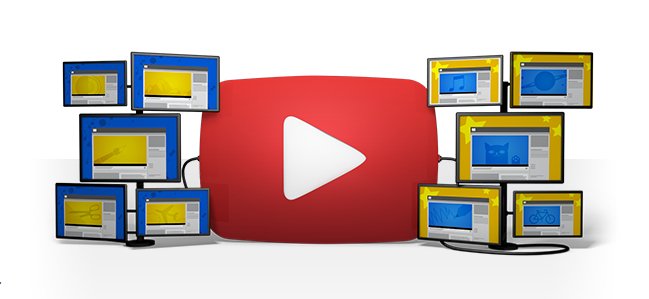9 Questions and Answers Regarding YouTube and Content ID
 Previously, we talked about the Great YouTube Copyright Shakeup and how it’s affecting various channels on the site.
Previously, we talked about the Great YouTube Copyright Shakeup and how it’s affecting various channels on the site.
To recap, YouTube changed it’s policy regarding multi-channel networks (MCNs) so that affiliates would be subject to the same Content ID checks that non-members were. This process included a full Content ID sweep of MCN affiliate accounts, which resulted in thousands of sudden Content ID claims on old, often very popular, content.
Though the change affected all MCN affiliates, it was disproportionately felt by video game channels as they are both more likely to be affiliates of MCNs and more likely to use 3rd party content that would be picked up in a Content ID sweep.
While all of that remains true, the story has evolved as YouTube has finally reached out to its content creators about the changes, taking the time to reaffirm its position. A group has been formed to try and determine which developers allow the creation and monetization of “Let’s Play” content and there have been at least a few cases of mistaken identity.
But even now, two weeks after the crackdown started, there’s a lot of confusion and misunderstanding about what exactly is going on and why. This confusion is understandable because the core issue, copyright, is confusing enough by itself without the added layer of technology and emotion.
With that in mind, here are five of the more common questions/misconceptions I’m seeing regarding the changes at YouTube and my answers to them. Hopefully, this can help clear the air a bit and make it easier for everyone to find a real, lasting solution.
1. What is Content ID?
Content ID is YouTube’s automated content matching service that’s offered to copyright holders, large and small, to help them track and take action against unwanted uses of their work on YoUTube.
The basic premise is that copyright holders upload copies of their work to YouTube. YouTube then digitizes that work and creates a fingerprint of it. That fringerprint can be matched against other videos uploaded to the service and when other videos match it, the system takes whatever action is outlined by the copyright holder.
That action varies from work to work and can include blocking the uploaded video, tracking its use or monetizing the content.
Under the law, YouTube, as well as other video hosts, have an obligation to remove infringing material from their site when they are notified about it. This notification usually comes in the form of a DMCA notice.
YouTube hosts an incredibly large amount of content and much of that content, historically, has been infringing. This has made the DMCA process very burdensome for YouTube with thousands of notices being sent daily. Content ID is intended as a way to both appease copyright holders, many of whom have been wary to work with YouTube due to copyright issues, and to reduce the number of DMCA notices that the site receives.
3. How is a Content ID Match Different from a DMCA Notice
First off, a Content ID match is an automated process where a DMCA notice involves a copyright holder, or their representative, directly making the statement that the content is infringing. Where a Content ID match can result in a variety of actions, a DMCA notice can only result in removal of the content.
However, while YouTube has a legal obligation to remove videos reported through the DMCA process, the Content ID process is completely its choice. The process may be in place to appease copyright holders, but the law is very clear that YouTube doesn’t have to be proactive in trying to root out infringement, just not encourage it, which can be a gray line for a service like YouTube.
For the YouTube user, a Content ID match is very different in that it, generally, doesn’t result in the work being taken down (though it may be blocked in some countries) and it doesn’t result in a copyright “strike” that can affect the standing of one’s account.
Instead, the video may be ineligible for monetization as the rights holder(s) involved are given monetization benefits.
4. Why Are So Many Claims Over Music?
Record labels have been particularly keen on Content ID as music videos have become one of the most popular types of content on YouTube. Content ID and monetization has become a key source of revenue for struggling labels and musicians.
Labels and musicians also routinely license their music to video games, either as theme songs or background music. While those licenses give the game publisher the right to use the song in the game, it doesn’t include the right to relicense it to third parties, including YouTubers.
So even if the game publisher is fine with YouTubers making videos of their games, they don’t have the rights to license the music within it and that music can easily be tagged through Content ID.
Though game studios and publishers could negotiate to get the rights to allow the use of music in their videos, that would be significantly more expensive and for a feature that would only impact a small number of customers.
5. Why Do Some Publishers Say The Claims Aren’t Theirs?
Several game publishers have come forward saying that they didn’t make the claims, didn’t intend for them to be made or, at the very least, are working with various channels to resolve the claims.
To be clear, for the game content to be in Content ID at all, it had to be put there by the developer. However, it appears that YouTube’s policy change was executed without any consultation of copyright holders so, most likely, developers truly did never intend their videos to be flagged on MCN-affiliated channels.
However, once again, the developers (or at least someone) had to put their content in Content ID for it to be matched, which means they did at least take that step and set up rules within Content ID for their work. Still, they probably didn’t intend for it to impact the channels it has and were likely caught just as off guard by many of the claims as the people who received them.
6. What About Fair Use?
Many of the claims have involved extremely short clips of songs playing in the background, snippets of video games used in a review and so forth, all likely fair uses of the original content.
Unfortunately though, Content ID is an automated process and isn’t able to make determinations of fair use. Fair use is a complex and nuanced part of copyright law in the U.S. and it requires human evaluation to make a judgment.
The more severe limitation, however, is that it fair use is not a “right”, but rather, a defense. The only way to determine, definitively, if something is a fair use is to be sued for infringement and prevail in court on the fair use question.
Even though many of the uses being trapped by Content ID are almost certainly clear fair uses, Content ID, nor anyone else really, can make that determination definitively.
YouTube could change the way it’s Content ID system matches content, needing longer clips before triggering a result, but that could result in more actual infringements slipping through the cracks.
In short, Content ID is always going to tag some non-infringing uses and let some infringements slip through. The system will never be perfect.
7. Why Did YouTube Change its MCN Policy?
Prior to the policy change, affiliates of MCNs were given special privileges on YouTube, including freedom from Content ID scans of their content and no magnetization review process, meaning videos were available for monetization the moment they were uploaded.
This was because MCNs signed agreements with YouTube to take direct responsibility for content on its member channels and those agreements were part of the pitch that MCNs gave affiliates in encouraging them to sign up and surrender a portion of their revenues.
Why YouTube changed that policy is unclear. Though several theories have been floated, YouTube has not come out and said what prompted the change.
8. What Can the Affected Channels Do?
Sadly, not much. YouTube is standing by its new policy and it doesn’t seem like it’s going to change.
To be clear, all of these Content ID matches are ones that would have been detected on day one if these channels had not been part of an MCN. The only thing that has changed is that MCN affiliates are now being treated the exact same as those not on such networks at all.
Where the next fight is likely to come from is when these affiliates try to leave the MCNs they are a part of. Many joined their networks because of the copyright and monetization issues and, with that protection no longer available, have little reason to continue and may even seek to break contracts.
Whether that works will depend on the contract that the affiliate has with their MCN, but several networks have publicly stated that they are not letting their members out of contracts, despite the changes.
9. Whose the Bad Guy Here?
There’s a real desire to blame someone and to say that the whole ordeal is person X’s fault. However, there just isn’t any clear villain in this story.
Though we don’t know why YouTube changed its MCN policy, the change merely brings parity between MCN affiliates and non-affiliated channels. YouTube created Content ID as a way to lessen a legal burden on itself and help keep pirated/infringing content off the service.
Copyright holders leapt onto Content ID as an alternative to the DMCA process not only because it was easier, but because it offered a way to monetize what would otherwise be infringing uses of their work rather than simply firing off takedown requests. Few, if any, wanted the focus to be on 10-second clips in the background of a Let’s Play video.
Content ID works the way it does because of the underlying nuances in copyright law and the fact it’s a machine that can’t make human judgments. A machine can’t determine fair use and is going to be flawed.
The YouTubers involved had been creating reviews and other videos for years without incident and were suddenly slammed with a spate of Content ID claims, much of it on content likely a fair use and all of it content that they had, for years in some cases, believed to be without legal issue.
Finally, MCNs were just as blindsided by these changes as YouTuber creators were and, while they can let people out of their contracts, they have no obligation to do so. Their business model is, in the end, just as wrecked as their affiliates.
Bottom Line
In the end, this mess is still being sorted out and it’s a long way from being over. I’ll be watching it and offering more comments and thoughts on it after the holiday break.
Hopefully, regardless of the outcome, the YouTube community, in particular the YouTube gaming community, will be able to remain strong and continue to grow, putting these speedbumps behind them.
Want to Reuse or Republish this Content?
If you want to feature this article in your site, classroom or elsewhere, just let us know! We usually grant permission within 24 hours.
